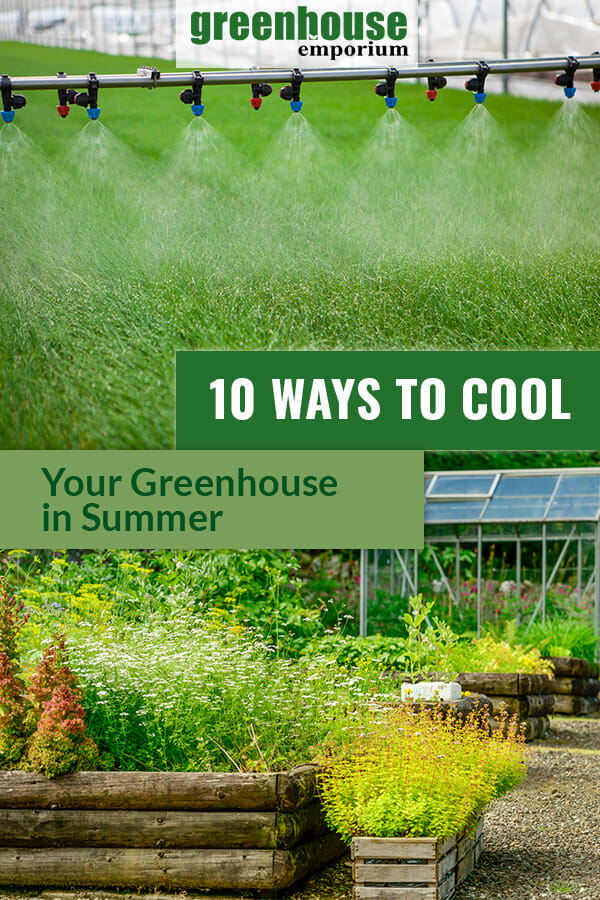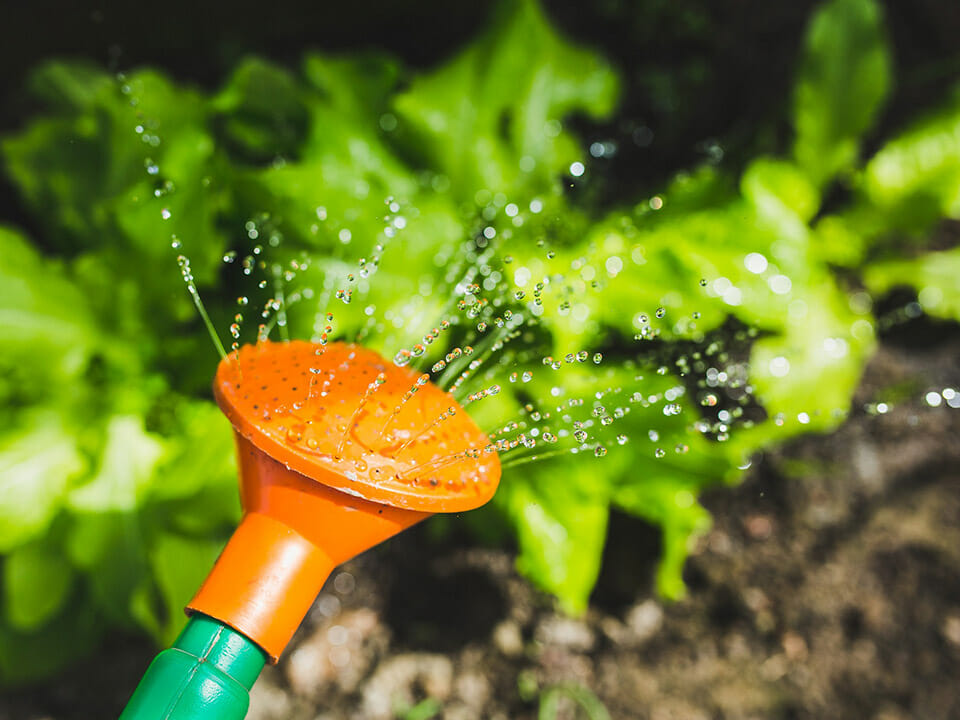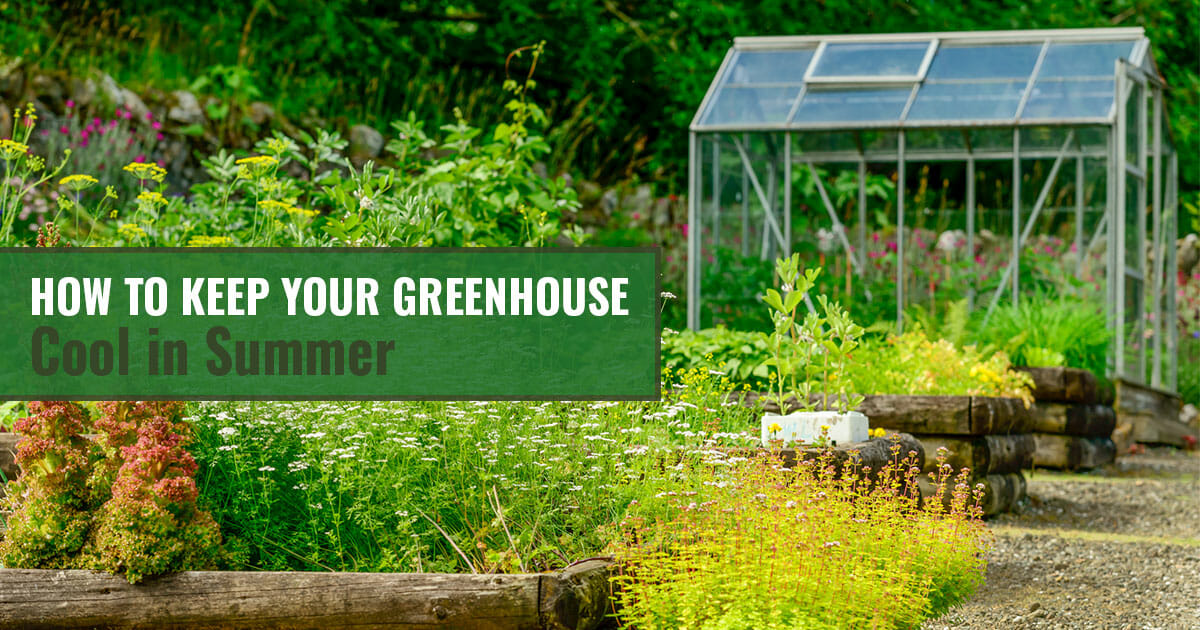When people think about year-round gardening in a greenhouse, everyone is worried about keeping up the temperature in winter. What they should be worried about is cooling the greenhouse in summer.
When the temperature begins to rise, it can cause serious troubles for your plants inside the greenhouse. This is why it is vital to learn how to cool your greenhouse so you can produce healthy plants even in summer.
There are several ways to keep your greenhouse cool in summer, especially in hotter areas. You may need to practice a few DIY methods like active ventilation or installing accessories such as swamp coolers and misters. The technique you’ll use depends on your available budget and how much cooling you need. Here, you’ll find 10 ways to keep your greenhouse cool in summer. First, let’s answer the big question!
What temperature is too high for your greenhouse?
Generally, any temperature above 90°F (32°C) is too hot for your greenhouse. It is recommended that you do everything possible to keep your greenhouse below this temperature. This might become a real chore if you are living in an area where 100°F (38°C) is common.
If your greenhouse temperature starts increasing rapidly in summer, you’ll have to take adequate steps to retain the perfect conditions for your plants.
What’s a good temperature inside a greenhouse?
Generally, 80 to 85°F (26 to 29°C) would be an ideal temperature for your plants. But then again, everything is based on the plants you are growing.
Some love cooler temperatures, others like warmer temperatures. So, keep this in mind for greenhouse gardening plans. Maybe you plan those heat-lovers for summer and cold-lovers for winter.

10 ways to keep your greenhouse cool in summer
Despite the high temperatures in summer, you can provide your plants with the perfect temperature they need. Steps for cooling a greenhouse, and what you’ll need to do to keep it cool depends on what plants you are growing and where you live.
1. Install a thermometer
First, you should get a thermometer if you don’t have it already. This will help you monitor the temperature of your greenhouse. A standard thermometer can help you keep an eye on your temperature to ensure optimal growth.
2. Ventilation for great air flow inside the greenhouse
Every greenhouse needs a ventilation system in place. So, before you consider any other cooling option, ensure you have airflow inside your greenhouse. This can be as simple as properly placed air vents, such as roof windows and louver vents.
Most times, the temperature inside your greenhouse will exceed outside temperature by 10-20°F during intense heat. This condition is not a good one for your plants. At this point, you can either use a natural or mechanical ventilation system to keep things cool.
For natural ventilation, you can simply use side vents and base vents, in addition to roof vents to quadruple the airflow. Leaving your doors open can also help keep your greenhouse from getting too hot. Automatic vent openers are tools that can help to keep your greenhouse cool because you don’t have to be home to open the vents. They have wax-filled pistons that open or close automatically depending on the temperature conditions. You can install them to help increase airflow and maintain plant growth.
Natural ventilation may not be sufficient if you have a medium or big-sized greenhouse, or if the temperatures outside climb too high.
This is why you need to resort to mechanical ventilation such as the use of exhaust fans. A quality ventilation system will help to blow out hot air and bring cooler air into your greenhouse.
3. Using greenhouse fans
Moving air around your greenhouse will help to decrease the temperature a little. Keep in mind, it’ll still use the air from inside or outside. So, if it’s 90°F, don’t expect your greenhouse to get much below that if you only use an exhaust fan to cool your greenhouse.
There are several options when it comes to fan systems. However, there are certain factors you must consider before installing any fan system.
First, you need to consider the perfect fan size for your greenhouse. You’ll have to find out the ventilation rate that is appropriate for your structure. You can get a professional to help with this. Usually, fans should provide one air exchange per minute up to a height of 8 feet.
Another crucial factor is the location. You should install your fan at the top of the structure because hot air moves up (for exhaust fans) and this way, the air flow is above the plants. Exhaust fans are installed to blow the hot air out. Then, the intake shutter vent (louvered vent) should go on the opposite side of the greenhouse. It should be installed rather toward the bottom so that it pulls in the cooler air.
Combining a regular greenhouse fan with louver vents increases airflow as well. You can either install them behind the fan so that the fan pulls cooler air from outside, or you can install them at the top of any wall to release hot air.
It’s also essential to perform regular maintenance on your fan systems. Simple tasks like cleaning fan blades, belts, and motors can help your fans last long. If you are in a hotter region, you may require more effective options like evaporative cooling.
4. Cool your greenhouse with evaporative systems
Evaporative systems are effective and fairly inexpensive accessories used for cooling a greenhouse. They use heat to evaporate water and can decrease the temperature in your greenhouse by 10-20 degrees! They work better when relative humidity is low. The most common evaporative coolers are fan-and-pad cooling systems. They function by drawing in warm air with the pads and cooling down the greenhouse.
A fan-and-pad evaporative cooler uses an overhead water supply and a gutter to accumulate water onto a pad. There are usually fans on either side to draw warm air into the pads. So, the pads are always kept wet, and then the water moves from liquid to gas and absorbs the heat.
You need to pick a suitable evaporative cooler for your greenhouse. About 1 square foot of pad is required to cool 20 square feet of floor area. Plus, regular cleaning of your evaporative systems would reasonably increase its efficiency.
5. Install a misting system or a fogger
These cooling systems are just like evaporative coolers. They cool down the temperature to a greater degree at a faster rate. If you live in a cooler region, a mister/fogger would be a mild option that’ll work perfectly.
Misters and foggers cool the environment by emitting water droplets through nozzles. And as the water evaporates, the temperature reduces. Both systems are the same, except that foggers emit tinier droplets and have an even more effective cooling capacity.
They also help to increase the humidity level. But I must warn you, misting systems and foggers won’t work that well in a region of high humidity because the air already has too much moisture.
6. Damping down
Another DIY greenhouse cooling method is damping down. It is very similar to misting. It helps to keep plants cool even in severe heat. This method works by raising the humidity so plants can deal with the higher temperatures. You can easily get this done by wetting hard surfaces such as paths and staging within the greenhouses.
As the water evaporates, moisture levels are increased, which also helps keep pests away. You can damp down your greenhouse as often as you desire but when it is very hot, be careful not to overdo it.

7. Water your plants adequately
To keep your plants growing and staying healthy, they need adequate watering. Proper watering prevents plant stress and keeps them cool. How? Through the process of transpiration, plants are kept cool as they lose moisture through the leaf pores.
This especially goes for tropical plants like orchids. If you find the leaves of your plant wilting at the edges or looking unhealthy, they are probably lacking water.
8. Install a portable air conditioner
A portable air conditioner is another great option for cooling large greenhouses. They are energy-efficient and cost-effective. Most of them come with a dehumidifier as part of the system.
So, they’ll help to moderate humidity levels while keeping your greenhouse cool. Plus, growers with lean-to greenhouses that are attached to their houses can simply vent their air conditioners into their greenhouses. The sad part is that air conditioners are quite pricey, this option may not suit you if you are on a slim budget.
9. Use plants strategically
This is another natural trick to keep your greenhouse cool in summer. First, plants are natural evaporative coolers. To keep your greenhouse cool, you’ll need to plant large-leaved plants like grapevine and fig trees.
The large leaves help transpire moisture and shade the soil. Now, you get to keep the temperature down, shade your soil and enjoy juicy fruits, amazing right?
Guess what? You can also use plants to shade your greenhouse. That’s right, simply constructing your greenhouse near a deciduous tree would give you just the shade you need from the sun.
Deciduous plants can help you with year-round protection for your greenhouse. It loses its leaves in winter and provides sunlight in such a cold time. However, its leaves grow back in spring, so you’ll get the shade you need from the scorching sun.
However, we don’t recommend building a greenhouse too close to a tree. This may cause damage. Also, don’t follow this if you are living far North. You’ll need any sunlight you can get in spring, fall, and winter. In this case, a shade cloth will work better.

10. Creating shade for less sun exposure
Shade cloths and curtain systems are a quick and cheap option for creating shade which cools down the greenhouse slightly. Don’t expect a big drop, though, because it’s not a concrete roof you put over it.
These cloths also can become very useful if the scorching sun burns your plants. You can simply install internal curtains and close where needed. External shade cloths can be installed over the whole greenhouse and usually provide slightly better insulation from the heat of the sun.
Shade cloths for greenhouses come in different colors and densities, which are measured in percentages (e.g. 30 and 90 % shade). These percentages indicate the amount of light that is blocked from the greenhouse. Now, the question is which density should you use?
This depends on your local climate, as well as your greenhouse design, and the light requirements of your plants. Generally, light shades between 30-50% are recommended for vegetables as they still require adequate sunlight. A 50% gradient can go for other regular plants, you can even opt for a higher shade if you’ve planted ferns or orchids.
To a very large extent, curtain systems can enhance your greenhouse environment and decrease plant stress. Endeavor to use curtain materials made from durable material. You can try materials like polypropylene, polyolefin, or aluminet. The latter two materials help to reflect some heat as well.
Why should you keep your greenhouse cool in summer?
If you’ve read through the methods above and you’re wondering why you should invest so much time, effort, and money for this, then I should tell you your risks.
If you don’t keep your greenhouse cool, you are going to risk all your hard work. How? Your plants are more prone to pests and diseases when they are hot. They can also become stressed out, begin to wilt, or dry out in high temperatures.
In extreme conditions, they may even stop producing new growth. And you know what that means: low or no yields! Most plants especially vegetables grow in cool(-ish) conditions, going past this would mean less health and growth for them.
So, should you just quit growing in a greenhouse in summer? Maybe. If you think, it’ll be easier for you to start your plants inside the greenhouse and move them outdoors for the summer, go for it! If you rather want to have your plants protected from critters and some pests, you have to make sure to cool your greenhouse properly.
Common questions about greenhouse cooling techniques
If I leave the greenhouse doors open to reduce heat, how can I prevent pests from entering?
You can add screens to any opening like you would in your house. You can either use simple mosquito screens that you can buy at a home improvement store or have a look at our screens for Janssens greenhouses.
Can mold grow in evaporative coolers?
Mold loves humidity and moisture so it can grow in an evaporative cooler. In order to prevent this from happening, it important to maintain the cooler. Change the water frequently (every 2 weeks) and clean the pad(s) after the summer. Keeping the unit clean should prevent any mold from growing.
How often should I use damping down (if I choose to use it as a greenhouse cooling technique)?
You can damp down your greenhouse floors every morning if the forecast has predicted a hot day. It’s not as useful on cooler days.
























